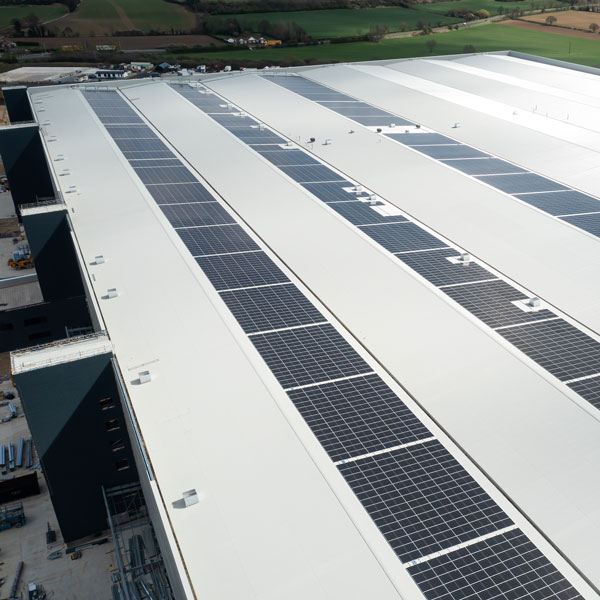The new UK Net Zero Carbon Buildings Standard is set to be the rule book for accrediting commercial and residential property as net-zero carbon, not just operationally but considering the embodied carbon used in construction, retrofit and minor works. It has been left to the commercial sector to drive forward and adopt as the set standard. We have outlined some highlight factors in the standard below.
Expanded Sector Coverage
The Standard now includes sectors like industrial, leisure, and data centres, which were previously underrepresented. This is a vital step; especially as industrial and logistics assets alone make up 35% of non-domestic floor space in England and Wales (ND-NEED 2024 data).
Key Metrics
The framework outlines 10 key metrics: six with specific limits and targets and four reserved for reporting. Compliance requires assets to be fossil fuel-free, although carbon offsetting remains optional unless dictated by local policies.
Operational Energy
Energy Use Intensity (EUI) limits are not currently aligned with established frameworks such as the Climate Risk Real Estate Monitor (CRREM) or NABERS. However, future mechanisms for equivalence are mentioned, which will be critical to avoid confusion and ensure consistency across the sector.
Renewable Energy Targets
The Standard sets ambitious targets for annual onsite renewable energy generation:
• 60–75 kWh/m² of building footprint for single-family homes and single-story warehouses
• 30–45 kWh/m² for other building types
Closer alignment with the Future Homes/Building Standard, which is still under consultation, would be beneficial, particularly regarding photovoltaic (PV) coverage requirements.
Embodied Carbon
The Standard introduces upfront embodied carbon targets and requires life cycle emissions reporting. Targets vary based on asset type and project scope (e.g., new builds, refurbishments, retrofits). Some gaps remain due to limited case studies, but these are expected to be addressed following the pilot phase.
A specific embodied carbon limit of 750 kgCO₂e/kWp is set for onsite PV systems. Current Environmental Product Declarations (EPDs) suggest mono-crystalline panels can achieve approximately 600 kgCO₂e/kWp, raising questions about whether this threshold is sufficiently ambitious.
Fossil Fuel-Free Compliance
The Standard mandates fossil fuel-free energy for key systems, with exemptions for essential backup power, such as life safety generators or data room backups.
Reporting and Verification
Certification is only possible after a building has been completed and occupied for at least one year. For existing buildings, the first reporting period spans 12 months from the commencement of studies, with a default target of 2025 if no retrofits occur.
Whole-building reporting poses challenges for leased properties, requiring robust metering strategies or agreements to capture complete energy usage. The reporting template—an extensive Excel spreadsheet—may initially seem daunting but promises to be a valuable tool for data collection and refinement of future iterations.
Looking Ahead
The UK Net Zero Carbon Buildings Standard represents a significant stride towards decarbonising the built environment. While its pilot version provides a strong foundation, further refinement and alignment with existing frameworks will be essential to ensure its adoption across the industry. With continued collaboration and feedback, the Standard has the potential to become a cornerstone of the transition to net-zero carbon buildings.
Ready to align with the new UK Net Zero Carbon Buildings Standard?
As the commercial sector takes the lead in adopting this critical framework, now is the time to ensure your properties meet the emerging standards for carbon neutrality. Whether you’re involved in new builds, retrofits, or minor works, it’s essential to understand the new metrics and targets that will shape the future of construction and property management.
Get ahead of the curve. Contact us today to discuss how you can start meeting the requirements of the UK Net Zero Carbon Buildings Standard, from operational energy targets to embodied carbon reporting. Together, we can drive the future of sustainable buildings.


Recent Comments